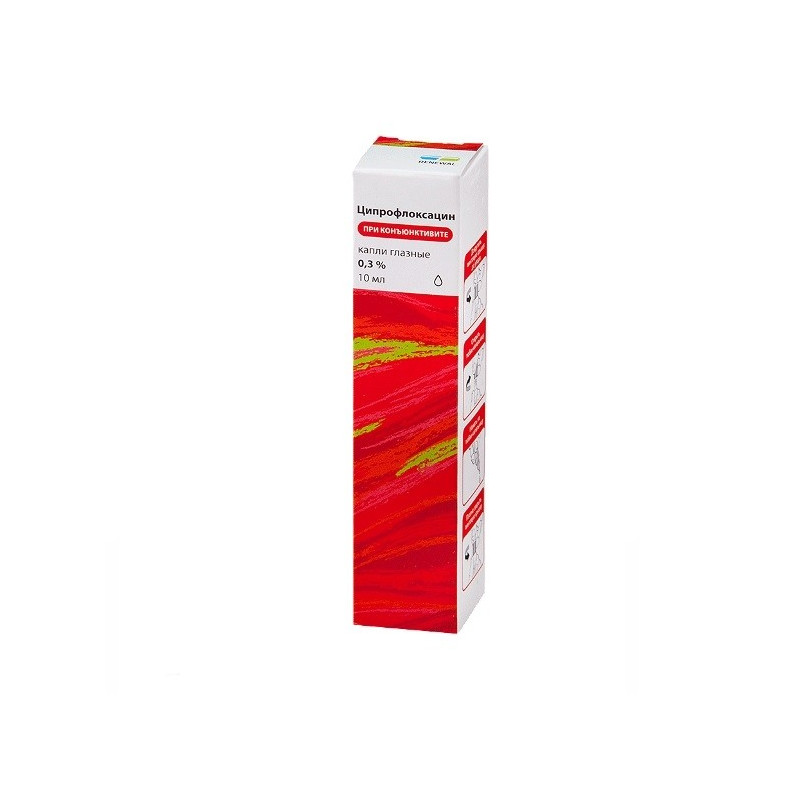



 All payments are encrypted via SSL
All payments are encrypted via SSL
 Full Refund if you haven't received your order
Full Refund if you haven't received your order
Ciprofloxacin is a broad-spectrum antimicrobial agent from the group of fluoroquinolones. Bactericidal effect. The drug inhibits the enzyme DNA gyrase of bacteria, as a result of which DNA replication and synthesis of cellular proteins of bacteria are violated. Ciprofloxacin acts both on the breeding microorganisms and on those in the resting phase.
Ciprofloxacin sensitive:
Gram-negative aerobic bacteria: Escherichia coli, Salmonella spp., Shigella spp., Citrobacter spp., Klebsiella spp., Enterobacter spp.
Other Gram-negative bacteria: Haemophilus spp., Pseudomonas aeruginosa, Moraxella catarrhalis, Aeromona, spp. Pasteurella multocida, Plesiomonas shigelloides, Campylobacter jejuni, Neissenia spp.
Some intracellular pathogens: Legionella pneumophila, Brucella spp, Chlamydia trachomatis, Listeria monocytogenes, Mycobacterium tuberculosis, Mycobacterium kansasii, Mycobacterium aviumintracellulare.
Gram-positive aerobic bacteria: Staphylococcus spp. (S. haemolyticus, S. hominis, S. saprophyticus), Streptococcus spp. (St. pyogenes, St. agalactiae).
The sensitivity of the bacteria Streptococcus pneumoniae, Enterococcus faecalis is moderate. Most methicillin-resistant staphylococci are resistant to Ciprofloxacin.
The drug resistant: Corynebacterium spp, Bacteroides fragilis, Pseudomonas cepacia, Pseudomonas maltophilia.
Ureaplasma, Clostridium difficile.
The effect of the drug on Treponema pallidum is not well understood.
In ophthalmology:
During pregnancy and lactation, Ciprofloxacin should be used only when the potential benefit to the mother justifies the potential risk to the fetus (child).
The solution in the form of eye drops is not intended for intraocular injections. When using other ophthalmic drugs, the interval between their introduction should be at least 5 minutes. Use of the drug should be discontinued when any signs of hypersensitivity appear. The patient should be informed that if after application of drops the conjunctival hyperemia continues for a long time or increases, then you should stop using the drug and consult a doctor. During the period of drug treatment is not recommended wearing soft contact lenses. When using hard contact lenses, they should be removed before instillation and again put on 15-20 minutes after the instillation of the drug.
ciprofloxacin hydrochloride monohydrate based on ciprofloxacin 3.0 mg.
Excipients: sodium acetate trihydrate, mannitol, disodium edetate dihydrate, benzalkonium chloride, acetic glacial acid, purified water.
Locally.
For a mild to moderately severe infection, eye drops are instilled 1-2 drops into the lower conjunctival sac of the affected eye (or both eyes) every 4 hours, for a severe infection, 2 drops every hour. After improvement, the dose and frequency of instillation is reduced. With bacterial corneal ulcer - 1 drop every 15 minutes for 6 hours, then 1 drop every 30 minutes in waking hours; on day 2 - 1 drop every hour during waking hours; From 3 to 14 days - 1 drop every 4 hours during waking hours.
Allergic reactions: itching, burning, mild soreness and hyperemia of the conjunctiva or in the area of the external auditory canal and eardrum, nausea; rarely - eyelid edema, photophobia, lacrimation, foreign body sensation in the eyes, unpleasant taste in the mouth immediately after instillation, reduced visual acuity, white crystalline precipitate in patients with a corneal ulcer, keratitis, keratopathy, corneal spots or corneal infiltration, development of superinfection.
The interaction of Ciprofloxacin drops with other drugs with simultaneous use has not been identified.There is evidence that the systemic use of certain quinolones leads to an increase in plasma concentration of theophylline, affects the metabolism of caffeine and enhances the effect of oral anticoagulants, such as Warfarin and its derivatives. A temporary increase in serum creatinine was reported in patients who were given cyclosporine with systemic use of ciprofloxacin. Ciprofloxacin is incompatible with alkaline solutions.
